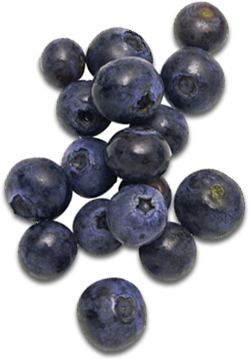no items to display
Fall Vegetable Feature: Broccoli
While most vegetables flourish in the summertime, a hearty few prefer the colder months. This fall, we toast broccoli: king of the cool-weather crops!
Like Brussels sprouts, cabbage, cauliflower, and kale, broccoli belongs to a family of protective vegetables known as crucifers. Cruciferous vegetables are among the healthiest on the planet. They contain phyto-nutrients known as glucosinolates, which help activate detoxification pathways in the body. Numerous population studies have linked consumption of cruciferous vegetables with lower rates of various cancers. Now there’s new evidence that a chemical derived from broccoli, called sulforaphane, could someday help fight autism.
A preliminary placebo-controlled study of 40 teenage boys and young men with severe autism spectrum disorder found that nearly half of those treated with broccoli-derived sulforaphane showed significant improvements in their symptoms — including irritability, lethargy, hyperactivity, awareness, communication, and motivation —after 18 weeks.[i]
There were two reasons to think these results weren’t just random chance. First, symptoms returned when the young people discontinued the sulforaphane treatment. And second, boys and men in the placebo group did not improve. Researchers speculate sulforaphane may work by reducing inflammation in the body.
While these findings are promising, the amount of sulforaphane administered in this study was much higher than you can get through eating broccoli or other cruciferous vegetables, no matter how many you pile on your plate. And the specific sulforaphane treatment used in the study is not yet available over the counter. Still, it’s definitely something to watch for as more studies emerge, and it’s more evidence that the natural compounds in fruits and vegetables are often the key to unlocking good health.
Of course, there are plenty of other reasons to eat your broccoli now. While it’s available year-round, broccoli picked in the cooler fall months is sweeter and tastier than summer-harvested broccoli. Some people say the best broccoli is that which is picked after the first frost, so if you buy locally, be sure to snap some up at the farmers’ market the first weekend after you see frost on the ground. Plus, this cruciferous vegetable is packed with nutrition! A one-cup serving of broccoli supplies:
· 135% of the daily value (DV) for vitamin C, which also aids immune function and is needed for the health of connective tissue
· 116% of the DV for vitamin K, which is necessary for healthy blood coagulation and the metabolism of calcium
· 14% of the DV for folate, a B vitamin that supports heart health, healthy aging, prevents birth defects, and may help prevent cancer
· 11% of the DV for vitamin A, necessary for healthy vision, immune strength, and the integrity of skin and mucous membranes
· 10% of the recommended daily intake (RDI) of manganese, a mineral that plays a role in bone, joint, and skin health
· 2.4 grams fiber, which is necessary for normal digestion and reduces the risk of heart disease
· And just 31 calories!
The easiest way to eat broccoli is as a side dish, steamed and served with a little olive oil or butter. It also makes a great topping for baked potatoes and is a highly versatile ingredient in soups, stews, and stir-fries. Broccoli can also be eaten raw, with a healthy dip, like a creamy tahini sauce (made from ground sesame seeds).
Here’s a recipe for a vegan broccoli soup that’s perfect for the cooler weather: http://www.foodnetwork.com/recipes/food-network-kitchens/vegan-cream-of-broccoli-soup.html
I’m also a fan of these broccoli fritters:
http://paleomg.com/paleo-broccoli-fritters/
What’s your favorite way to eat broccoli?
[i] http://www.washingtonpost.com/news/morning-mix/wp/2014/10/15/study-chemical-in-broccoli-shows-promise-as-autism-treatment/






